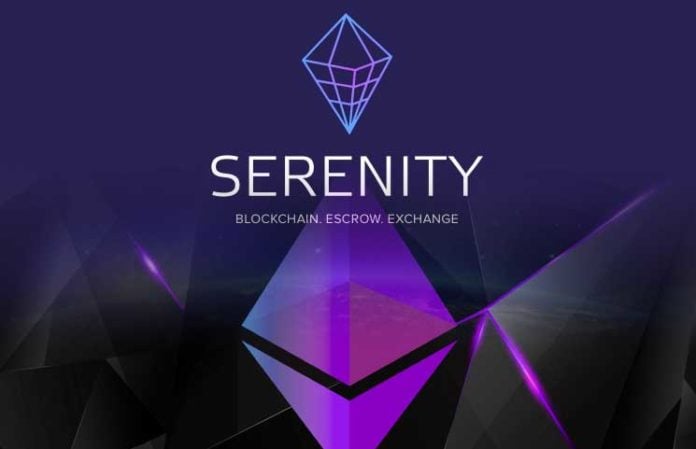
Ethereum 2.0 is a term used to describe a series of potential updates to Ethereum to make it, for lack of better terms, faster and better than previous version.
Potential updates to address current scaling issues, issues with mining, and to some extent issues with security include Proof-of-Stake (PoS) solutions (Beacon Chain, Casper FFG), Sharding, eWASM, Plasma, Raiden, and more.
Each of the above solutions either addresses scaling (AKA it makes transactions faster and thus creates a better environment for smart contracts and dApps), changes the way Ethereum is mined, and/or helps make the network more secure.
Ethereum 2.0 is Called Serenity

This is an all-in-one solution (and also a long planned final phase of Ethereum 1.0 that takes us to 2.0) being discussed called Serenity.
Just information, Serenity is an idea that combines most of the Ethereum upgrade ideas noted on this page (including Proof-of-Stake, eWASM, and Sharding) together on a new parallel chain that would run along side and be fully compatible with the existing chain.
Ethereum’s launch was initially planned to be in four stages back when it launched in 2015:
- Frontier: The initial build at launch,
- Homestead: The build that took us into 2018,
- Metropolis: the current phase (a two part phase consisting of two hard forks, Byzantium and Constantinople), and
- Serenity: the final stage that takes us to “Ethereum 2.0” in three phases from 2019 – 2021 (timeline subject to change). Being worked on alongside this is Plasma, Raiden, and some other solutions (which you can consider to be part of Ethereum 2.0 or not).
We are now in Metropolis (see this BlockGeeks guide for an in-depth Metropolis explainer), and the next step is Serenity AKA Ethereum 2.0.. Keep reading for the Ethereum 2.0 AKA Serenity explainer.
Semantics: According to Vitalik Buterin, creator of Ethereum, Serenity is the new name for Ethereum 2.0.
That said, one might generally think of all the upgrades that will take us to the next phase of Ethereum as “Ethereum 2.0.” It is largely a matter of semantics. The bottom line is that we are discussing upgrades that address Ethereum’s sticking points and take it to the next level.
The Solution from This Upgrade

Here is a description of each basic solution Ethereum is working on to upgrade the network:
- Proof-of-Stake (PoS) solutions like Beacon and Casper refer to switching how Ethereum is mined. This addresses how the system is secured and how new coins are created.
- Sharding in general is splitting a large database into smaller more manageable parts, same general concept for the Ethereum network. This addresses issues of scalability and transaction speed and stops one app from slowing down the network.
- eWASM allows code to execute faster among other things. It expands coding options and capabilities for the Ethereum Virtual Machine.
- Plasma is an extra layer that sits on top of the network that can handle massive amounts of transactions. It is the Ethereum version of Bitcoin’s Lightening Network.
- Raiden is an off-chain scaling solution, like Plasma. Thus, this is also an Ethereum answer to the Lightening Network.
- A bunch of things I didn’t specifically mention. There are a lot of ideas floating around and ideas that have already been implemented, including some system-wide upgrades that are part of the current phase of the Ethereum roadmap called Metropolis, and versions of the ideas on this page and important features contained within them. So keep in mind there is a lot more being worked on that the major items I’ve mentioned.
- Serenity is an upcoming major upgrade that creates a Proof-of-Stake chain that combines many of the above ideas (PoS, eSWASM, sharding, etc) into a new chain that would run tandem with and be fully compatible with the existing Proof-of-Work chain. This scaling and mining solution would not only partly change the way Ethereum is mined but also in theory would allow for faster transactions (and thus would create a better environment for smart contracts and dApps). In theory, Serenity could increase scalability by as much as 1000x (hopefully).
- … also zk-snarks (a “zero knowledge proofs” technology created for zcash) might be used as a temporary scaling solution in the meantime.
Problems in the Previous Version
The above updates, some of which involve some code change that would need to be accepted by the community and in many cases exist as additional layers that sit on top of the existing network (or in the case of Serenity, simply a wholly new chain that exists alongside the current chain), are important because they address some fundamental and current problems with Ethereum. Problems include:
- Scalability. The ability of Ethereum to be a world computer that handles financial transactions and hosts smart contracts and DApps without being unusably slow. Right now that is a problem. All the solutions above aside the proof-of-stake ones address this.scalability is hands down Ethereum’s #1 sticking point right now.
- A solution for the difficulty bomb. There is a built in rule that forces developers to switch from proof-of-work mining to proof-of-stake over time by slowing down mining rewards by increasing difficulty. The lack of a solution is hanging over Ethereum’s head.
- Security. Security isn’t the main problem with Ethereum, but there are aspects of security that stand to be improved and its one of the things being worked on.












